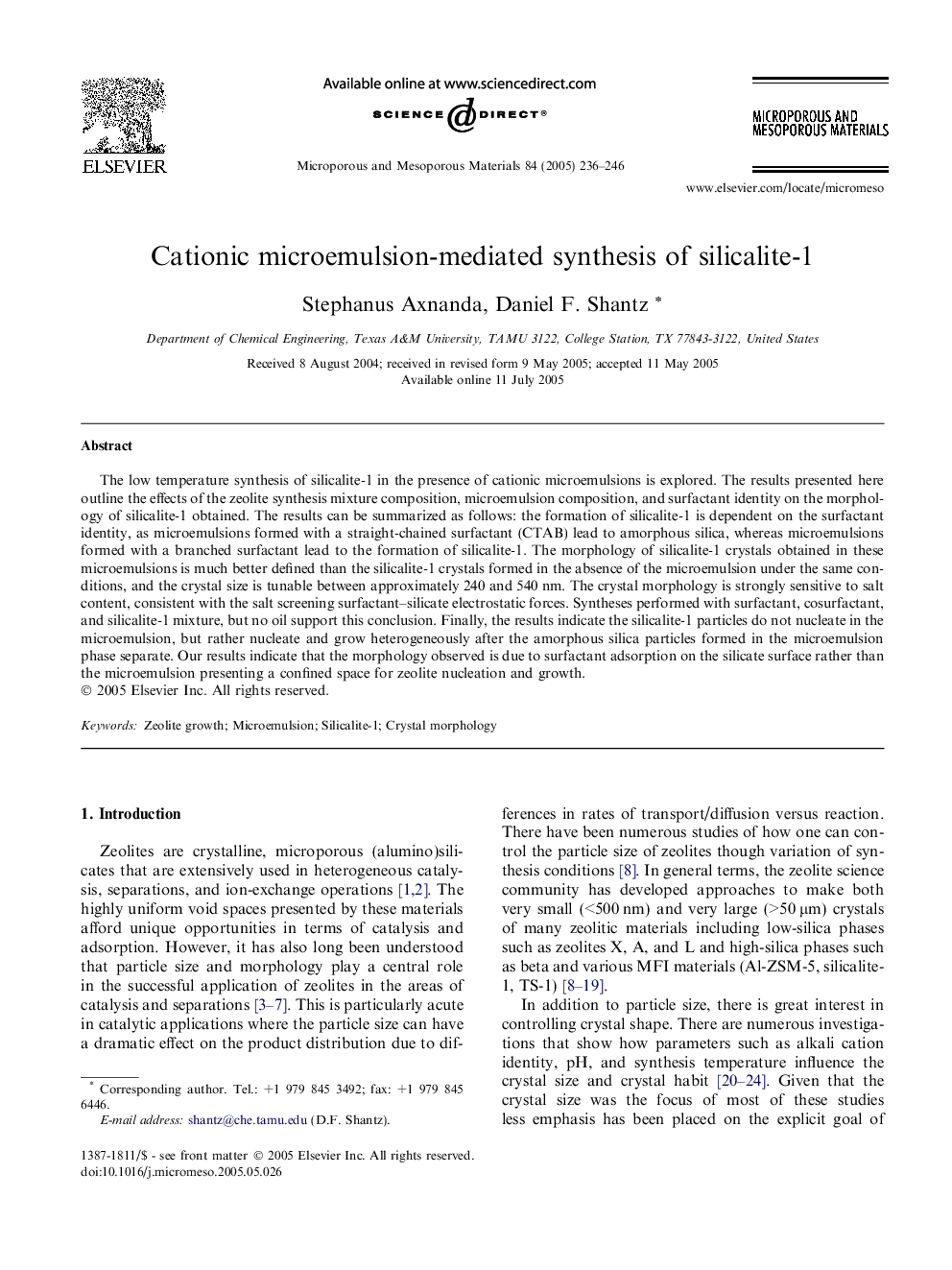| Article ID | Journal | Published Year | Pages | File Type |
|---|---|---|---|---|
| 9617610 | Microporous and Mesoporous Materials | 2005 | 11 Pages |
Abstract
The low temperature synthesis of silicalite-1 in the presence of cationic microemulsions is explored. The results presented here outline the effects of the zeolite synthesis mixture composition, microemulsion composition, and surfactant identity on the morphology of silicalite-1 obtained. The results can be summarized as follows: the formation of silicalite-1 is dependent on the surfactant identity, as microemulsions formed with a straight-chained surfactant (CTAB) lead to amorphous silica, whereas microemulsions formed with a branched surfactant lead to the formation of silicalite-1. The morphology of silicalite-1 crystals obtained in these microemulsions is much better defined than the silicalite-1 crystals formed in the absence of the microemulsion under the same conditions, and the crystal size is tunable between approximately 240 and 540Â nm. The crystal morphology is strongly sensitive to salt content, consistent with the salt screening surfactant-silicate electrostatic forces. Syntheses performed with surfactant, cosurfactant, and silicalite-1 mixture, but no oil support this conclusion. Finally, the results indicate the silicalite-1 particles do not nucleate in the microemulsion, but rather nucleate and grow heterogeneously after the amorphous silica particles formed in the microemulsion phase separate. Our results indicate that the morphology observed is due to surfactant adsorption on the silicate surface rather than the microemulsion presenting a confined space for zeolite nucleation and growth.
Related Topics
Physical Sciences and Engineering
Chemical Engineering
Catalysis
Authors
Stephanus Axnanda, Daniel F. Shantz,
